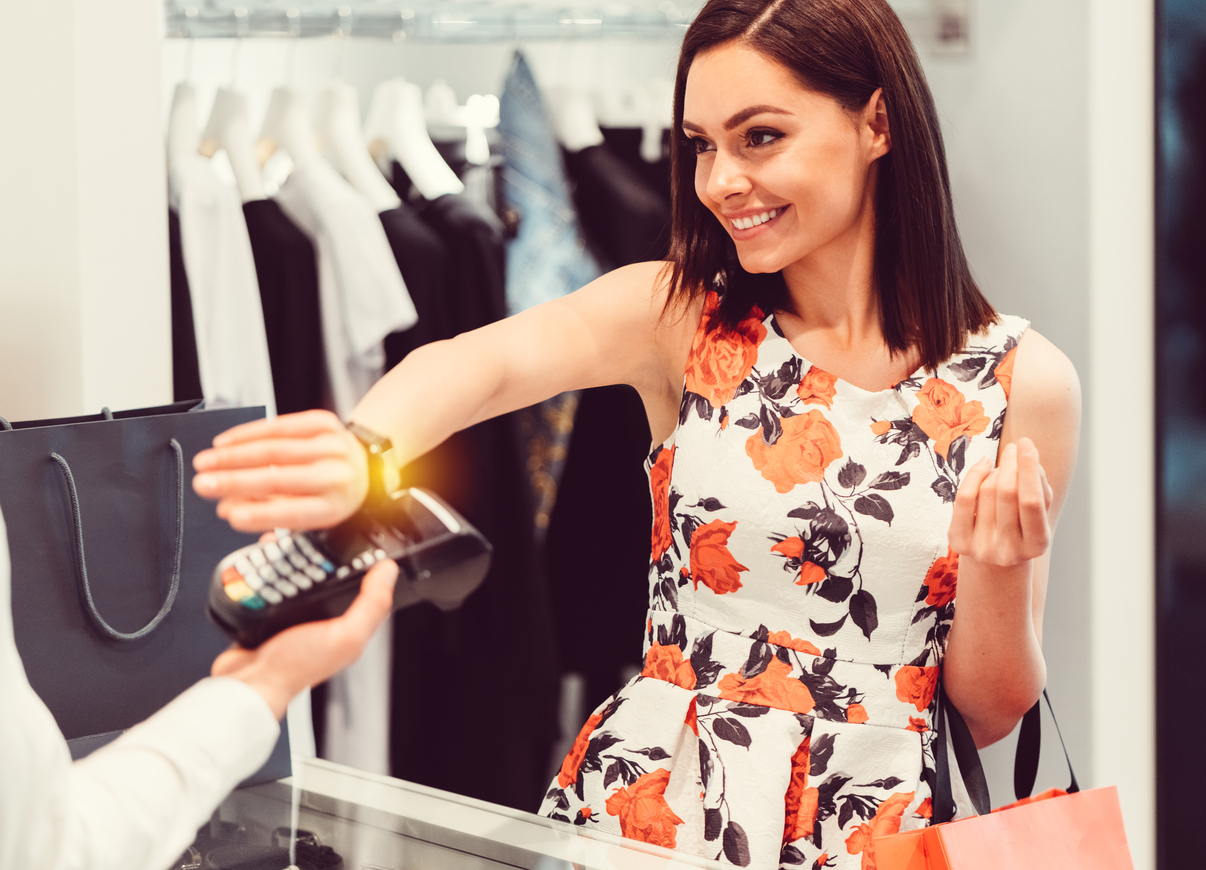After contactless payment chips started popping up in bank cards and smartphones, it was never going to take long before someone with a little more fashion sense started putting them into wearables. As a result, we’ve now reached that previously unimaginable situation where geek and chic come together. Say hello to the contactless payment wearable.
The technology behind this latest trend are NFC (near field communication) chips which have three perfect features for contactless wearables: they don’t need their own power supply, they’re incredibly secure and, most importantly, they are small enough to embed into things.
One place where payment wearables have made their mark this year was at the PyeongChang Winter Olympics in South Korea. High profile sporting events are the ideal location for big name brands to launch innovative products and it was the team from Visa who went for gold with their cleverly practical contactless payment gloves.
Winter Olympics are necessarily cold, so gloves are a fashion essential. However, they also make it annoyingly difficult to pay for things. Using cards or smartphones is anything but simple with padded fingers, however, if the contact payment chip is built into the glove itself, it makes payment much easier.
Working with their South Korean partner, Lotte Card, Visa managed to produce a wearable that fulfilled three functions exceptionally well: keeping hands warm, being on-trend and making payment easy. By embedding the NFC chip into the fabric, all customers had to do was place their hand near the payment terminal.
It wasn’t just gloves that Visa put on show at the Olympics. Also on the catwalk were contactless pin badges and stickers. Perfectly designed souvenir items, these featured the PyeongChang Olympic logo and, like the gloves, let customers spend prepaid sums at participating venues. The flexible and thin adhesive stickers proved very popular as shoppers could stick them to anything they wanted, such as scarves, purses, watch straps and jacket cuffs.
Perhaps surprisingly, the origin of payment gloves was not in hi-tech South Korea, home to technology giants Samsung and LG, but back here in Blighty. They were first trialled four years ago by Barclaycard as a way to let consumers pay for items even when their hands were full of shopping. Although an innovative move by Barclaycard, it was probably too early to be successful. At the time, the contactless infrastructure was less developed and consumers hadn’t really taken the technology on board. Today, things are much different.
Indeed, the UK is leading the way when it comes to fashionable contactless wearables. Take Kerv, for example. This ultra-smart, Mastercard payment ring, made from scratch resistant Zirconia, has been getting a lot of press attention recently, perhaps most notably from gadget guru, Jason Bradbury, the well-known face of Channel 5’s Gadget Show. He was so enamoured by it, he wears it as his wedding ring.
The UK has everything in place to be the world leader in contactless payment wearables. We have a wealth of innovative young designers, we’re home to many of the companies that want to issue contactless solutions, we have the celebrities, media and events to launch the products and, underpinning all this, we have a well-established NFC industry, with companies such as Universal Smart Cards, that can supply the technology. In fact, NFC-enabled bracelets, necklaces, key fobs and phone cases are already widely available. As are NFC wristbands, which are very popular for access control and contactless payments at festivals and events.
What will turn geek chic into high street fashion, however, is when contactless wearables begin to appeal to fashion brands. It might not be long before the next Wimbledon champion is seen wearing contactless wristbands that sport an iconic logo. Before you know it, every kid in high school will be using them to pay for their Maccy Ds.
Geek chic will grow as more payment card companies link up with fashion houses and big-name brands to make contactless wearables part of our everyday gear. This collaboration is on the cards: contactless spending grew by 80% in the UK last year and giving customers practical and fashionable ways to pay is only going to increase the number of people who adopt this technology – especially the younger generations who are more tech savvy and fashion conscious.
Wrapping up
The great thing about contactless payment wearables is that they are fun. They make carrying out a financial transaction practical, convenient and, in an odd sort of way, enjoyable. We enjoy wearing the gear and we enjoy the unique way in which we pay for things. As contactless payment becomes the standard way to pay, on-trend wearables will be the method of choice for many.



 Bitcoin
Bitcoin  Ethereum
Ethereum  Tether
Tether  XRP
XRP  USDC
USDC  Solana
Solana  Cardano
Cardano  TRON
TRON  Lido Staked Ether
Lido Staked Ether  Toncoin
Toncoin  Avalanche
Avalanche